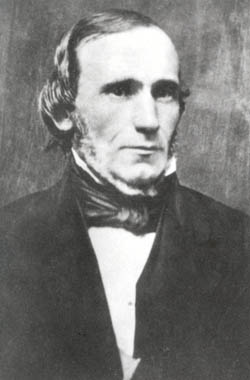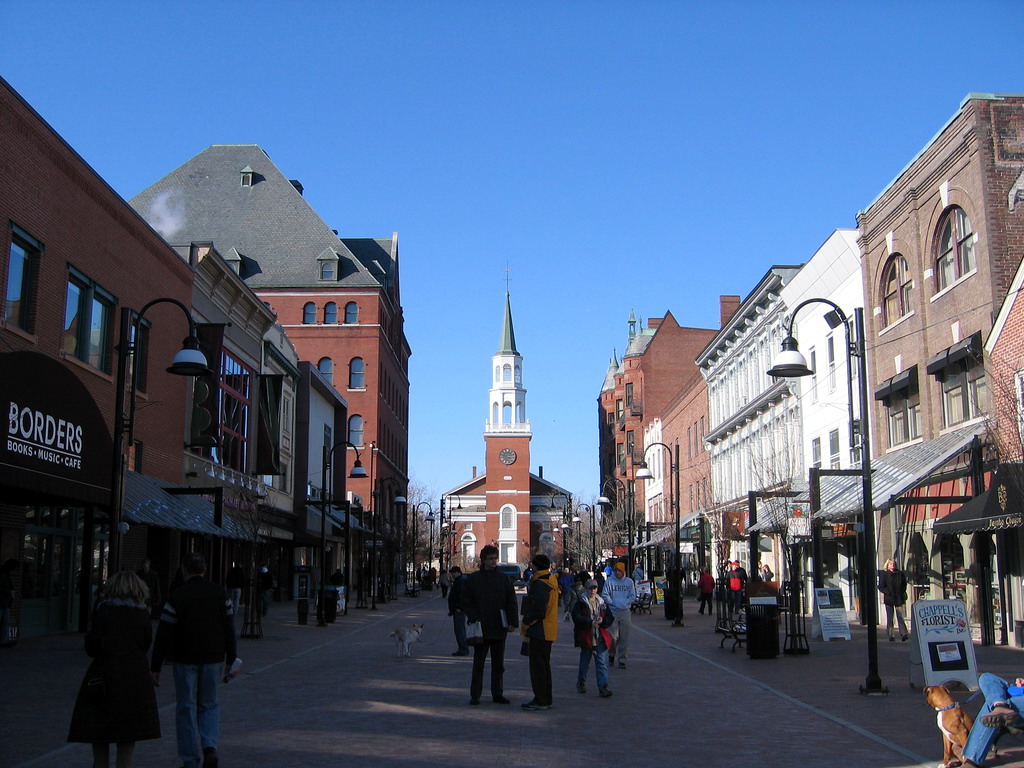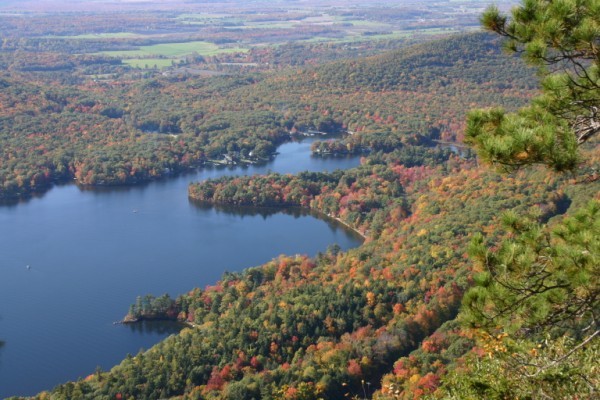|
1892 United States Presidential Election In Vermont
The 1892 United States presidential election in Vermont took place on November 8, 1892, as part of the 1892 United States presidential election. Voters chose four representatives, or electors to the Electoral College, who voted for president and vice president. Vermont voted for the Republican nominee, incumbent President Benjamin Harrison, over the Democratic nominee, former President Grover Cleveland, who was running for a second, non-consecutive term. Harrison won Vermont by a margin of 38.83%. With 68.09% of the popular vote, Vermont would be Harrison's strongest victory in terms of percentage in the popular vote. Results Results by county See also * United States presidential elections in Vermont References {{1892 United States elections Vermont 1892 Events January–March * January 1 – Ellis Island begins accommodating immigrants to the United States. * February 1 - The historic Enterprise Bar and Grill was established in Rico, Colorad ... [...More Info...] [...Related Items...] OR: [Wikipedia] [Google] [Baidu] |
Benjamin Harrison
Benjamin Harrison (August 20, 1833March 13, 1901) was an American lawyer and politician who served as the 23rd president of the United States from 1889 to 1893. He was a member of the Harrison family of Virginia–a grandson of the ninth president, William Henry Harrison, and a great-grandson of Benjamin Harrison V, a founding father. Harrison was born on a farm by the Ohio River and graduated from Miami University in Oxford, Ohio. After moving to Indianapolis, he established himself as a prominent local attorney, Presbyterian church leader, and politician in Indiana. During the American Civil War, he served in the Union Army as a colonel, and was confirmed by the U.S. Senate as a brevet brigadier general of volunteers in 1865. Harrison unsuccessfully ran for governor of Indiana in 1876. The Indiana General Assembly elected Harrison to a six-year term in the Senate, where he served from 1881 to 1887. A Republican, Harrison was elected to the presidency in 1888, def ... [...More Info...] [...Related Items...] OR: [Wikipedia] [Google] [Baidu] |
James Cranfill
James Britton Cranfill (September 12, 1858 – December 28, 1942) was an American religious figure and prohibitionist who served as the Prohibition Party's vice presidential nominee in 1892. Life James Britton Cranfill was born in Whitt, Texas on September 12, 1858, to Eaton Cranfill and Martha Galloway. He began to study medicine under his father in 1870 and received his medical certificate at age 21 in 1879. In 1890, he was ordained as a Baptist pastor and in 1892 he founded the Baptist Standard which he also served as editor of. On July 1, 1892, he narrowly defeated Joshua Levering for the Prohibition Party's vice presidential nomination with 416 delegates to 332 delegates after a story circulated that Levering was a member of the coffee industry. General John Bidwell was given the presidential nomination and the ticket received 270,813 votes for 2.24% of the popular vote which is the best performance of any Prohibition presidential ticket. At the Prohibition Party's 1896 c ... [...More Info...] [...Related Items...] OR: [Wikipedia] [Google] [Baidu] |
Lamoille County, Vermont
Lamoille County is a county located in the U.S. state of Vermont. As of the 2020 census, the population was 25,945, and it is the third-least populous county in Vermont. Its shire town (county seat) is the town of Hyde Park, while Morristown is the county's largest town by population as well as its main commercial center. The county was created in 1835 from portions of Orleans, Franklin, Washington, and Chittenden Counties and organized the following year. History The area was buried in a mile of ice during the ice age. As the ice melted, Lake Stowe was formed. When the ice melted completely, the water from the lake ran out through the Lamoille River valley. This area was long occupied by the Algonquian-speaking indigenous Abenaki people and their ancestors. During French colonization of what is now Canada, fur traders began to trade with the Abenaki. There were also French who settled here, coming down from the settlements in Quebec, and named the Lamoille River. The Fre ... [...More Info...] [...Related Items...] OR: [Wikipedia] [Google] [Baidu] |
Grand Isle County, Vermont
Grand Isle County is a county in the U.S. state of Vermont. As of the 2020 census, the population was 7,293, making it Vermont's second-least populous county. Its shire town (county seat) is North Hero. The county was created in 1802 and organized in 1805. Grand Isle County is part of the Burlington metropolitan area. The county does not have a high school; students choose from a number of high schools in neighboring counties. History Grand Isle County is one of several Vermont counties created from land ceded by the state of New York on January 15, 1777, when Vermont declared itself to be a distinct state from New York. The land was originally contested by Massachusetts, New Hampshire, New France and New Netherland, but it remained undelineated until July 20, 1764, when King George III established the boundary between New Hampshire and New York along the west bank of the Connecticut River, north of Massachusetts and south of the parallel of 45 degrees north latitude. New ... [...More Info...] [...Related Items...] OR: [Wikipedia] [Google] [Baidu] |
Franklin County, Vermont
Franklin County is a county located in the U.S. state of Vermont. As of the 2020 census, the population was 49,946. Its county seat is the city of St. Albans. It borders the Canadian province of Quebec. The county was created in 1792 and organized in 1796. Franklin County is part of the Burlington metropolitan area. History Franklin County is one of several Vermont counties created from land claimed by Vermont on January 15, 1777, when Vermont declared itself to be a state distinct from New York. The land originally was contested by Massachusetts, New Hampshire, and New York, but it remained undelineated until July 20, 1764, when King George III established the boundary between New Hampshire and New York along the west bank of the Connecticut River, north of Massachusetts and south of the parallel of 45 degrees north latitude. New York assigned the land gained to Albany County. On March 12, 1772, Albany County was partitioned to create Charlotte County, and this situation re ... [...More Info...] [...Related Items...] OR: [Wikipedia] [Google] [Baidu] |
Essex County, Vermont
Essex County is a county located in the northeastern part of the U.S. state of Vermont. As of the 2020 census, the population was 5,920, making it the least-populous county in both Vermont and New England. Its shire town (county seat) is the municipality of Guildhall. The county was created in 1792 and organized in 1800. Bordered by the Connecticut River next to New Hampshire, Essex County is south of the Canadian province of Quebec. It is the county with the lowest household-income in Vermont. History Prior to the arrival of colonists of European descent, the area was populated by the Abenakis. They used the Connecticut and Nulhegan rivers as primary means of travel through the area along with many subsidiary rivers and streams. The culture was mostly hunter-gatherer with a combination of agriculture, hunting and fishing. While the rivers provided good fishing the primary food animal was moose. Vermont was divided into two counties in March 1778. In 1781 the legislature di ... [...More Info...] [...Related Items...] OR: [Wikipedia] [Google] [Baidu] |
Chittenden County, Vermont
Chittenden County () is the most populous county in the U.S. state of Vermont. As of the 2020 census, its population was 168,323. The county seat is Vermont's most populous municipality, the city of Burlington. The county has over a quarter of Vermont's population and more than twice the population of Vermont's second-most populous county, Rutland. The county also has more than twice the population density of Vermont's second-most dense county, Washington. The county is named for Vermont's first governor and one of the framers of its constitution as an independent republic and later U.S. state, Thomas Chittenden. The county has most of Vermont's fastest growing municipalities. It is one of the three counties that comprise the Burlington metropolitan area, along with the counties of Franklin and Grand Isle to the north and northwest, respectively. The University of Vermont, Vermont's largest university, is located in the county, as well as its affiliated hospital, the UVM ... [...More Info...] [...Related Items...] OR: [Wikipedia] [Google] [Baidu] |
Caledonia County, Vermont
Caledonia County is a county located in the northeastern part of the U.S. state of Vermont. As of the 2020 census, the population was 30,233. Its shire town (county seat) is the town of St. Johnsbury. The county was created in 1792 and organized in 1796. It was given the Latin name for Scotland, in honor of the many settlers who claimed ancestry there. History The county shares the same pre-Columbian history with the Northeast Kingdom. Rogers' Rangers were forced to retreat through the county following their attack on Saint-Francis, Quebec in 1759. To confound their avenging pursuers, they had split up. One group came south over the summit into the Passumpsic River Valley. Vermont was divided into two counties in March 1778. In 1781 the legislature divided the northernmost county, Cumberland, into three counties: Windham and Windsor, located about where they are now. The northern remainder was called Orange county. This latter tract nearly corresponded with the old New Yo ... [...More Info...] [...Related Items...] OR: [Wikipedia] [Google] [Baidu] |
Bennington County, Vermont
Bennington County is a county in the U.S. state of Vermont. As of the 2020 census, the population was 37,347. The shire towns (county seats) are jointly Bennington ("The Southshire") and Manchester ("The Northshire"), and the largest municipality is Bennington. The county was created in 1778. History Bennington is the oldest county in Vermont still in existence, created by the first general assembly on March 17, 1778. Vermont was organized into two original counties, with Bennington in the west and Unity (a few days later renamed Cumberland) in the east. On February 16, 1781 Rutland County was created from Bennington County. On April 13, 1781, Bennington gained the gore east of the town of Bromley (now Peru) from Windham and Windsor Counties. From 26 June 1781 until 23 February 1782, Vermont attempted to annex part of New York east of the Hudson River (the so-called West Union); inhabitants in the area favored Vermont's township form of government, while Vermont hoped to gai ... [...More Info...] [...Related Items...] OR: [Wikipedia] [Google] [Baidu] |
Addison County, Vermont
Addison County is a county located in the U.S. state of Vermont. As of the 2020 census, the population was 37,363. Its shire town (county seat) is the town of Middlebury. History Iroquois settled in the county before Europeans arrived in 1609. French settlers in Crown Point, New York extended their settlements across Lake Champlain. A few individuals or families came up the lake from Canada and established themselves at Chimney Point in 1730. In 1731, Fort Frederic was erected at Cross Point. In 1759, General Amherst occupied Cross Point and British settlers came in. The Battle of Bennington in Bennington, fought on August 16, 1777, brought a turning point for the American independence against British. Addison County was established by act of the Legislature October 18, 1785, during the period of Vermont Republic. In 1791, Vermont joined the federal union after the original thirteen colonies. The main product of the county was wheat. In the 1820s farmers began to raise s ... [...More Info...] [...Related Items...] OR: [Wikipedia] [Google] [Baidu] |
Virginia
Virginia, officially the Commonwealth of Virginia, is a state in the Mid-Atlantic and Southeastern regions of the United States, between the Atlantic Coast and the Appalachian Mountains. The geography and climate of the Commonwealth are shaped by the Blue Ridge Mountains and the Chesapeake Bay, which provide habitat for much of its flora and fauna. The capital of the Commonwealth is Richmond; Virginia Beach is the most-populous city, and Fairfax County is the most-populous political subdivision. The Commonwealth's population was over 8.65million, with 36% of them living in the Baltimore–Washington metropolitan area. The area's history begins with several indigenous groups, including the Powhatan. In 1607, the London Company established the Colony of Virginia as the first permanent English colony in the New World. Virginia's state nickname, the Old Dominion, is a reference to this status. Slave labor and land acquired from displaced native tribes fueled the ... [...More Info...] [...Related Items...] OR: [Wikipedia] [Google] [Baidu] |
James Gaven Field
James Gaven Field (February 24, 1826 – October 12, 1901) was an American politician in California and Virginia, who was also a businessman, government clerk, and Confederate major. He became the Attorney General of Virginia and the vice presidential nominee of the Populist Party during the 1892 presidential election. Early and family life James Gaven Field was born in Walnut, Culpeper County, Virginia to Judge Lewis Yancy Field and Maria Duncan. After attending a private classical school, he became a merchant in the former lands of Lord Fairfax and taught school. On June 20, 1854, he married Frances E. Cowherd, two years his junior and they remained married until her death in April 1877. They had at least four children: William Field, Mard Field, James G. Field Jr and Maxy Field On February 2, 1882, married Elizabeth R. Logwood. Career In 1848 Field accompanied Major Hill, a paymaster for the U.S. Army, to California as clerk. In addition to his federal government job, he b ... [...More Info...] [...Related Items...] OR: [Wikipedia] [Google] [Baidu] |




